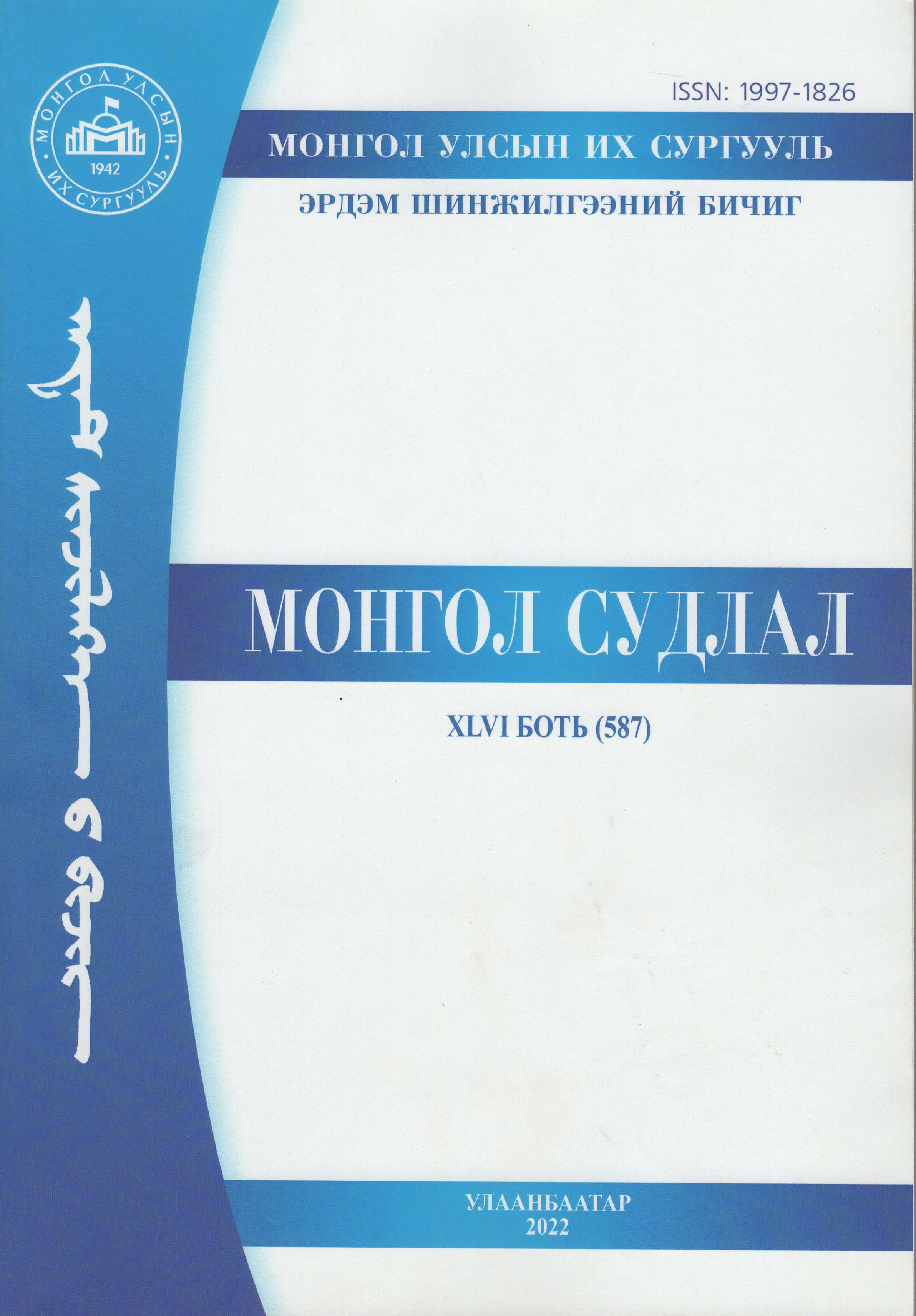С.Буяннэмэхийн уран бүтээл дэх “шинэ” бэлгэдлүүд
Keywords:
С. Буяннэмэх, бэлгэдэл , далд утга, уран зохиол, шүлэг, жүжигAbstract
https://doi.org/10.22353/ms20224618
The article analyzes the poems and some stories and plays of S. Buyannemekh, the modern Mongolian writer, identifies the experience of using symbols in his writings, and deciphers the main symbols. Analyzing the symbolic experience in S. Buyannemekh's writings, 1. S. Buyannemeh uses the Mongolian mythological tradition of symbolizing divine ideas with natural phenomena such as sunlight, moonlight, rain, rainbow, wind, and eastern mythological or Buddhist symbols such as gardi galbinga, Bodhi tree, and Land of Sugaavid, and further in his writings, used creatively. 2. S.Buyannemeh uses Chinese culture items such as snuff, cane, long pipe, Chinese fan, and religious superstition items such as “Puffball of Heaven” and “barley dolls” in his writings as ironical symbols of the disappearing culture. To this end, he created new symbols in Mongolian literature by depicting new cultural items such as bread, books, buildings, roads, helicopters, telephones, and mirrors in his short stores and plays while promoting new culture and ideology to the masses.





